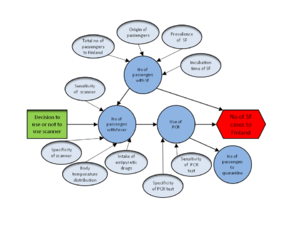Template:Assessment structure: Difference between revisions
Jump to navigation
Jump to search
(template updated for a full attribute structure) |
Juha Villman (talk | contribs) (added stub) |
||
| Line 1: | Line 1: | ||
[[Category: ]] | [[Category: ]] | ||
{{assessment|moderator=}} | {{assessment|moderator=|stub=Yes}} | ||
Add at least one category above. | Add at least one category above. | ||
Revision as of 13:12, 2 September 2010
[[Category: ]]
| Moderator:Nobody (see all) Click here to sign up. |
| This page is a stub. You may improve it into a full page. |
| Upload data
|
Add at least one category above.
Add moderator to the template above.
Add a brief summary here.
Scope
Purpose
* Purpose defines the specific information need of the decision-making and the research question that is asked.
Boundaries
* Boundaries define which parts of the reality are taken into the assessment and which are excluded within
spatial, temporal and other dimensions.
Scenarios
* Scenarios define particular conditions that are of interest irrespective whether they describe
reality or not (e.g. what-if scenarios).
Intended users
* Intended users are those for whom the assessment is made.
Participants
* Participants are those who may participate in the making of the assessment.
The minimum group of people for a successful assessment is always described.
If some groups must be excluded, this must be explicitly motivated.
Definition
Upload a causal diagram and change the right name here.

Decision variables
* Decision variables: decisions that are considered.
Indicators
* Indicators: outcome variables of interest.
Value variables
* Value variables: value judgements (usually about indicators).
Other variables
* Other variables: any variables that link to the causal network and are within the boundaries of the assessment.
Analyses
* Analyses: statistical and other analyses that contain two or more variables, e.g. optimizing.
Indices
* Indices: lists of particular locations along spatial, temporal, or other dimensions.
Result
* Results of indicators and assessment-specific analyses.
Results
Conclusions
* Conclusions are based on the results, given the scope.